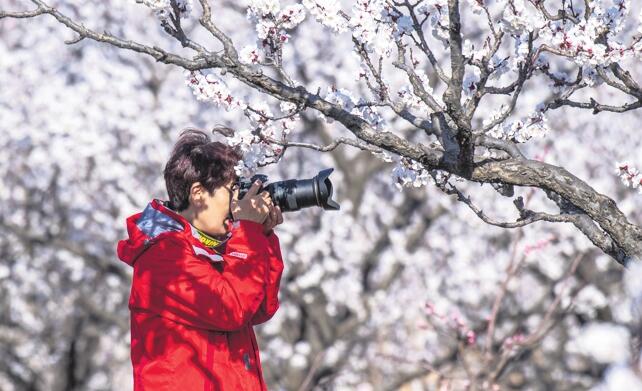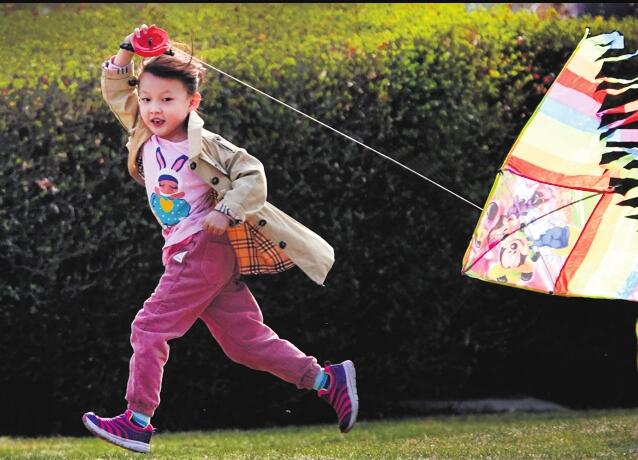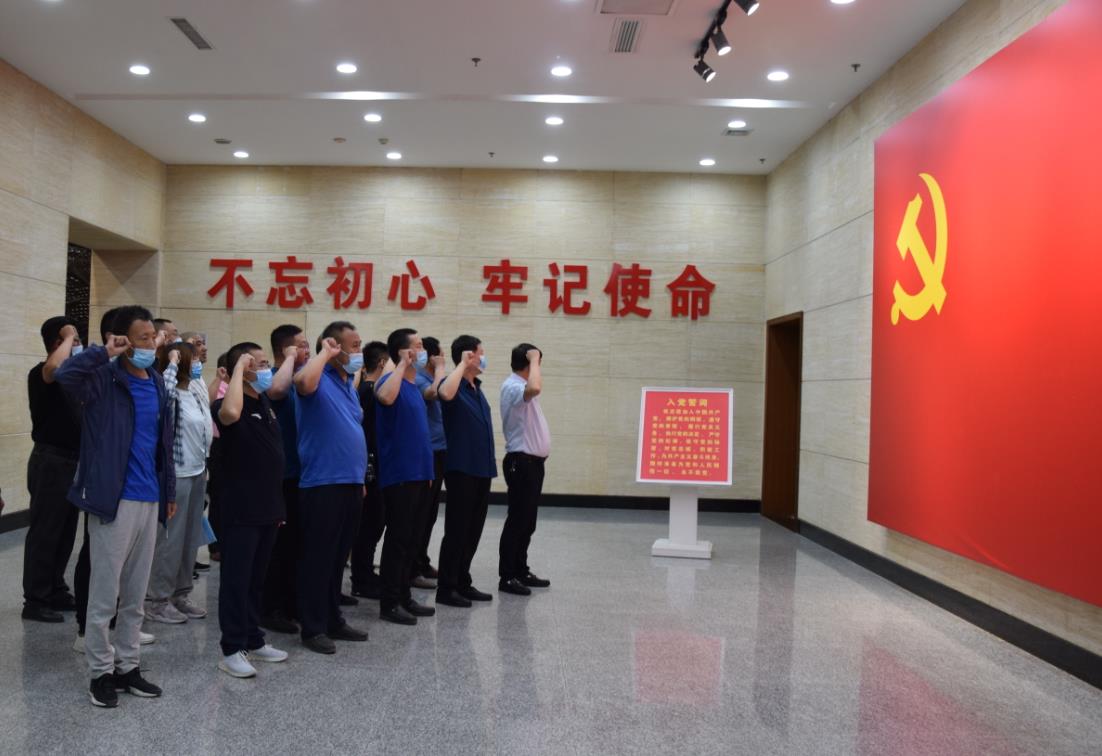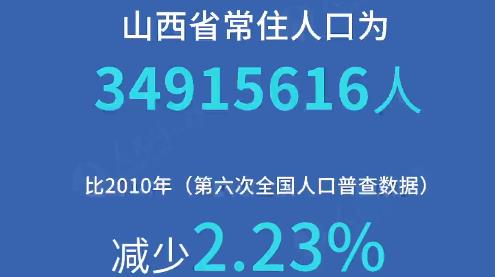
A tourist takes photos at a plum farm in Huangfu township in Wanrong county.

The Hukou Waterfall on the Yellow River in Jixian county is one of the most popular tourist attractions in Shanxi province.

A child flies kite at a public park in Taiyuan, capital of Shanxi province.
Upon hearing that tourist destinations were reopening in Shanxi province, Tong Fuquan, a retired policeman, started planning a trip to the province for early April with several of his friends.
His trip covered Datong, Youyu, Linfen and many other places. Tong then shared his travel experiences on WeChat, attracting the interest of other friends.
"Spring is a good time to see the sights, visit friends and relax," Tong said. He added that the incentive packages of many destinations and hotels are making tours cheaper.
Tong and his companions were not alone. During Qingming Festival-or Tomb Sweeping Day-at the beginning of April, Shanxi's various tourist destinations received nearly 7 million visits, according to the Shanxi Department of Culture and Tourism.
Officials at the department said the number is a welcome sign of recovery after the industry was hit hard by the outbreak of COVID-19 in the first quarter of 2020.
The recovery was also the result of a provincial marketing campaign to help the tourism industry overcome the negative effects of the pandemic.
The campaign launched by the department, which lasts from April 1 to June 30, called on tourism operators to offer preferential treatment to customers. This includes the exemption of ticket fees and deduction of transport and accommodation costs.
The three-day Qingming Festival was the first tourism peak of the year, with 215 out of 216 major destinations in Shanxi open to tourists.
The provincial department of culture and tourism released a market report on April 7. It showed 6.99 million visits were made to Shanxi's destinations and total spending by tourists surpassed 3.68 billion yuan ($522.6 million).
During last year's Tomb Sweeping Day, Shanxi's tourist destinations received 9.65 million visitors and netted 4.63 billion yuan in revenue.
"This year's numbers are not comparable to those in 2019. However, the sign of recovery is obvious," said Li Gui, deputy chief of the Shanxi Department of Culture and Tourism.
"Although ticket revenues decreased in many destinations, there was an increased willingness among tourists to spend on related services and products," Li said.
He added that the tourism boom was achieved while strict preventive measures were applied to ensure the health of tourists.
With these measures in place, tourists were allowed to expand their options from outdoor to indoor sites, according to Li.
Shanxi Museum, based in the provincial capital of Taiyuan, reopened on March 24. For Qi Chenyu, a frequent museumgoer in Taiyuan, the reopening was a long time coming.
"I planned to watch the murals show at the museum several months ago, but the trip was delayed by the epidemic," she said.
To her excitement, she was able to visit on April 7.
"I just felt I was the guest of honor when visiting the show with so few people. I could have enough time to study all the exhibits carefully and take pictures," Qi said.
To ensure the health of visitors, the museum only accepts online reservations from individual applicants and applies strict preventive measures.
Visitors are required to have their online health codes and body temperatures checked at the entrance. They also have to keep a distance of more than 1.5 meters from each other inside the museum, according to its officials.
Every scenic area in Shanxi now has online reservation services, according to Shi Zhenya, an official at the Shanxi Department of Culture and Tourism.
He said those who booked their tickets online can directly enter a scenic area by scanning their ID cards or QR codes at the entrance. This practice reduces the risk of cross infection by avoiding close contact with staff members.
It is a tradition during Tomb Sweeping Day that people make sightseeing tours in the countryside after sweeping the tombs of their ancestors and deceased family members.
To meet this demand, tourism operators in various regions in Shanxi have organized special routes and programs for rural tours.
Flower-themed sightseeing festivals are now held in Yuncheng, Yangquan, Changzhi, Linfen and Jincheng cities.
In some areas surrounding public cemeteries, tree-planting events have been held. Planting trees is a tradition in China to commemorate ancestors as Chinese people believe that the later generations should rest in the shade of trees planted by their ancestors.
By YUAN SHENGGAO
Li Yali contributed to the story.
 山西路桥:党建引领 建好“四好农村路”山西路桥建设集团党委扎实开展“党建质量提升年”,实施“六大工程”,立足“十四五”高质量、高速度、高效益发展的战略基点,全面提高党建质量和党建引领发展水平,为打造“国内一流的交通基础设施投资、建设、施工现代化企业集团”提供坚强政治保障。
山西路桥:党建引领 建好“四好农村路”山西路桥建设集团党委扎实开展“党建质量提升年”,实施“六大工程”,立足“十四五”高质量、高速度、高效益发展的战略基点,全面提高党建质量和党建引领发展水平,为打造“国内一流的交通基础设施投资、建设、施工现代化企业集团”提供坚强政治保障。
 常住人口3491万 山西人口普查数据"出炉"山西省统计局向社会通报山西省第七次全国人口普查主要数据。数据显示,山西省常住人口为34915616人,比2010年(第六次全国人口普查数据,下同)减少2.23%,年平均减少0.23%。山西省常住人口总量减少,主要受人口流动变化等因素影响。
常住人口3491万 山西人口普查数据"出炉"山西省统计局向社会通报山西省第七次全国人口普查主要数据。数据显示,山西省常住人口为34915616人,比2010年(第六次全国人口普查数据,下同)减少2.23%,年平均减少0.23%。山西省常住人口总量减少,主要受人口流动变化等因素影响。